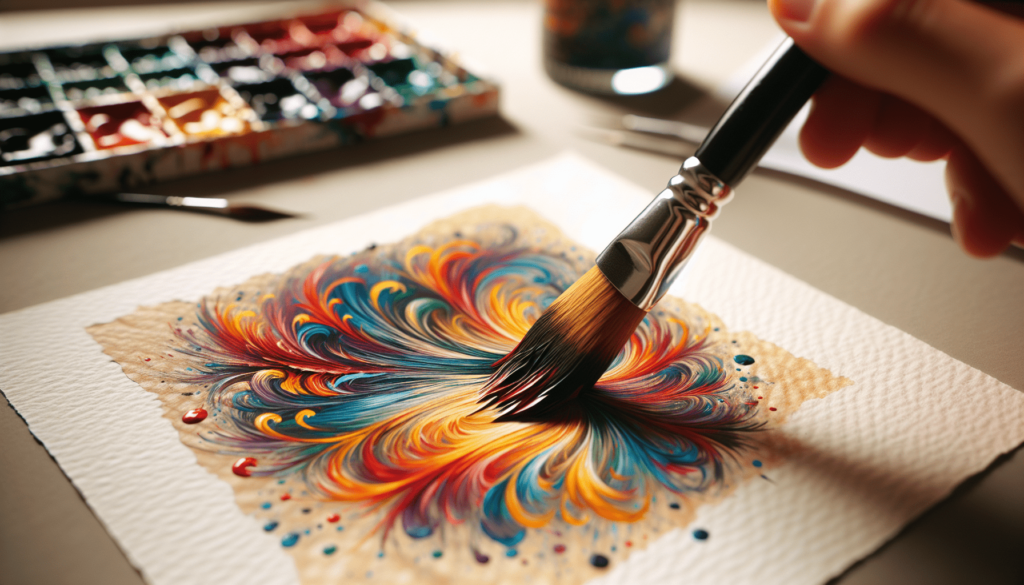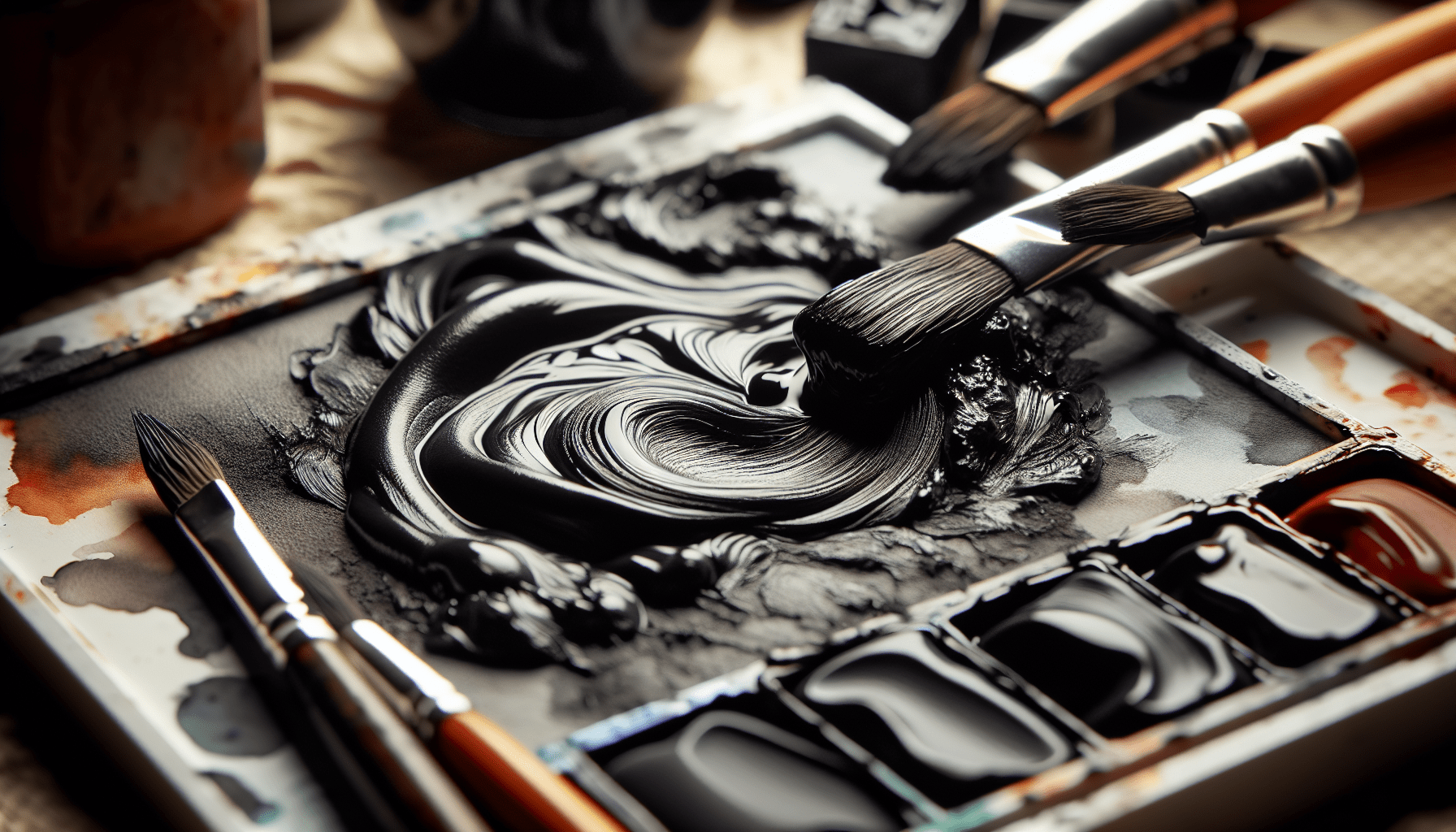Can You Use Acrylic Paint On Watercolor Paper” explores the compatibility and potential results of using acrylic paint on watercolor paper. This article delves into the unique qualities of both materials and how they interact when combined, offering guidance on achieving optimal results. Special attention is given to the preparation techniques for watercolor paper and the distinctive effects that acrylic paint can produce on such a surface. Whether you are an experienced artist aiming to expand your repertoire or a beginner looking to experiment, this article provides essential insights into integrating these two mediums effectively. Have you ever wondered if you can use acrylic paint on watercolor paper? The combination might seem unconventional, but it can yield remarkable results if executed correctly. Artists often seek surfaces that can provide the desired texture and outcome for their artwork. Watercolor paper is an appealing choice due to its durability and texture, while acrylic paint offers versatility and vibrancy. Understanding how these two materials can work together is essential for achieving the best results.

Understanding Watercolor Paper
Watercolor paper is specifically designed for use with water-based media. It is typically made of cotton or cellulose and can handle a significant amount of water without warping or deteriorating. The texture, weight, and quality of watercolor paper vary, which affects the final outcome of your artwork.
Types of Watercolor Paper
Watercolor paper comes in different forms, each offering unique properties:
| Type | Description |
|---|---|
| Hot Pressed | Smooth surface, minimal texture, ideal for detailed work |
| Cold Pressed | Slightly textured, most common type, versatile for various techniques |
| Rough | Highly textured, excellent for creating textured, impressionistic effects |
Weight of Watercolor Paper
The weight of watercolor paper refers to its thickness and heaviness. It is measured in pounds (lb) or grams per square meter (gsm):
| Weight | Description |
|---|---|
| Light (90-140 lb / 190-300 gsm) | Suitable for light washes and sketching |
| Medium (140-260 lb / 300-550 gsm) | General use, able to handle moderate water application |
| Heavy (300 lb / 640 gsm and up) | Best for heavy washes and intense water applications |
Watercolor paper is designed to absorb water efficiently without losing its integrity. This quality makes it an excellent candidate for use with other mediums, such as acrylic paint.
Acrylic Paint Characteristics
Acrylic paint is a fast-drying paint made of pigment suspended in acrylic polymer emulsion. It is water-soluble when wet but becomes water-resistant when dry. Acrylic paint is known for its versatility and can be used on various surfaces, including canvas, wood, metal, and certain types of paper.
Properties of Acrylic Paint
Acrylic paint offers several unique properties:
- Durability: Once dry, acrylic paint forms a flexible and durable film that is resistant to water and UV light.
- Opacity: Acrylics can be used both in translucent washes and thick, opaque applications.
- Drying Time: Acrylic paint dries quickly, allowing for rapid layering and reduced waiting time between layers.
- Adhesion: Acrylics adhere well to most surfaces, making them a versatile option for mixed media.
Benefits of Using Acrylic Paint
Using acrylic paint offers several benefits:
- Versatility: It can mimic the appearance of oil paint or watercolor, depending on the application technique.
- Fast Drying: Artists can work quickly and make changes to their artwork without long waiting periods.
- Water-Resistant: Once dry, acrylic paint is resistant to water, making it suitable for outdoor artwork.
Given these characteristics, acrylic paint can be used in combination with watercolor paper to create unique and vibrant artwork.
Compatibility of Acrylic Paint and Watercolor Paper
Using acrylic paint on watercolor paper can be an innovative way to combine the textures and qualities of both materials. However, a few considerations need to be kept in mind to ensure that the two mediums work harmoniously.
Preparing Watercolor Paper for Acrylic Paint
To achieve optimal results, preparing the watercolor paper before using acrylic paint is essential. Here are some steps to follow:
- Select the Right Paper: Choose a heavier weight watercolor paper (140 lb / 300 gsm or higher) to prevent warping and buckling.
- Stretch the Paper: If you are using lighter weight paper, consider stretching it by soaking it in water and taping it to a board to dry. This method helps to keep the paper flat during painting.
- Use Gesso: Applying a thin layer of acrylic gesso can help to prime the watercolor paper, providing a stable surface for acrylic paint. Gesso improves adhesion and creates a barrier to prevent the paint from soaking into the paper.
Applying Acrylic Paint on Watercolor Paper
Once the paper is prepared, you can apply acrylic paint using various techniques:
- Layering: Due to the quick drying time of acrylic paint, you can build up layers quickly, adding depth and dimension to your artwork.
- Mixing with Mediums: Using acrylic mediums (e.g., gloss medium, matte medium, or gel medium) can alter the texture and finish of the paint, giving you more control over your final piece.
- Combining Techniques: You can combine watercolor techniques (such as washes and glazing) with acrylic painting to create unique effects.
Challenges to Consider
While using acrylic paint on watercolor paper has its advantages, there are some challenges to keep in mind:
- Warping and Buckling: Even with heavier weight paper, extensive use of water and paint may cause some warping. Proper preparation and stretching methods can mitigate this issue.
- Absorption: Watercolor paper absorbs paint differently than canvas or other surfaces, which may affect the appearance and blending of colors. Experimenting with different techniques can help you achieve the desired results.
- Surface Roughness: Depending on the texture of the watercolor paper, the surface may appear rougher when using acrylic paint, potentially impacting the final finish. Adjust your technique to accommodate this characteristic.
Techniques for Combining Acrylic Paint and Watercolor Paper
Combining acrylic paint with watercolor paper opens up a range of artistic possibilities. By mastering different techniques, you can create stunning mixed media pieces that leverage the best qualities of both materials.
Washes and Glazes
One popular technique is to create washes and glazes with acrylic paint. By diluting the paint with water or an acrylic medium, you can achieve a translucent effect similar to watercolor. This method allows you to build up color gradually, adding depth and complexity to your artwork.
Impasto and Texturing
For a different approach, consider using thicker applications of acrylic paint to create texture on watercolor paper. The impasto technique involves applying paint in thick, textured layers using a palette knife or brush. This method can introduce three-dimensionality and tactile interest to your work.
Mixed Media Approaches
Incorporating other materials and techniques can further enhance your artwork. Experiment with:
- Collage: Combining acrylic paint with paper, fabric, or other materials can add visual interest and complexity.
- Ink and Pen: Use ink or fine-tipped pens to add intricate details or outlines over your acrylic paint layers.
- Pastels and Pencils: Blend pastel or colored pencil elements into your acrylic painting for nuanced texture and color variations.

Sealing and Protecting Your Artwork
To preserve your mixed media piece, it is crucial to consider sealing and protecting your finished work. Acrylic paint is durable, but the underlying watercolor paper may still be vulnerable to damage.
Varnishing
Applying a varnish can protect your artwork from dust, UV light, and physical wear. Varnishes come in different finishes, such as matte, satin, and gloss, allowing you to choose the best appearance for your piece.
Steps for Varnishing
- Ensure Completely Dry Paint: Make sure your acrylic paint is fully dry before applying varnish.
- Select the Right Varnish: Choose a varnish suitable for mixed media work. Acrylic varnishes are preferred for their compatibility.
- Apply Evenly: Use a soft brush or spray bottle to apply an even coat of varnish. Multiple thin layers are better than one thick layer.
- Drying Time: Allow sufficient time for each varnish layer to dry completely before applying the next one.
Framing and Displaying
Displaying your artwork under glass or in a frame can provide additional protection. For best results:
- Use Archival Materials: Choose acid-free mats and backing to prevent deterioration over time.
- Avoid Direct Sunlight: Display your artwork away from direct sunlight to minimize the risk of fading and discoloration.
- Regulate Humidity Levels: Maintain stable humidity levels to prevent warping or damage to the watercolor paper.
Conclusion
Using acrylic paint on watercolor paper is a viable and exciting option for artists looking to explore new techniques and textures. By understanding the properties of both materials and implementing appropriate preparation and application methods, you can create unique and vibrant artwork that stands the test of time. Embrace the possibilities offered by this unconventional combination and let your creativity thrive on watercolor paper with acrylic paint.



